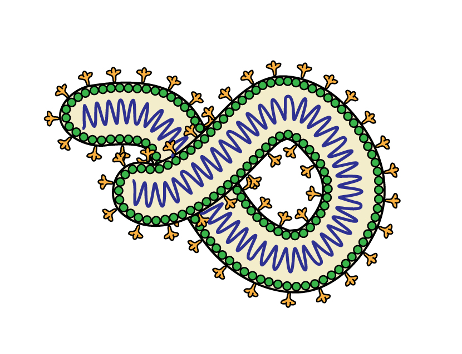Filoviridae
Filoviruses possess filamentous viral particles and a negative sense single-stranded RNA genome. Different genera of Filoviridae infect vertebrate hosts, including fish, snakes, bats, and occasionally primates and humans via zoonotic transmission. Filoviruses infecting humans include Ebola virus and Marburg virus, which both cause systemic disease with high fatality rates. There have been at least 17 documented outbreaks of Ebola virus disease in Africa, with case-fatality rates varying between 39.5% and 90.9%. The primary target cells for Ebola virus are thought to be dendritic cells and macrophages, where Ebola virus glycoprotein (EBOV GP) mediates attachment to cells and subsequent entry via endolysosomal compartments. EBOV GP is composed of a trimer of heterodimers and is highly N- and O-glycosylated. Throughout the course of infection, the virus can spread to most organs, leading to multiple organ failure, inhibition of innate and adaptive immunity, and, in some cases, blood vessel leakage. Ongoing efforts to decrease fatality rates and prevent spread of disease include treatment with monoclonal antibody cocktails and ring vaccination strategies, with variable outcomes depending on time of administration and disease severity.
